How to Grow the Moringa Tree: A Complete Guide
Moringa, also known as the “Miracle Tree,” is a fast-growing, drought-resistant plant that is native to parts of Africa and Asia. It is highly valued for its nutritious leaves, which are rich in vitamins, minerals, and antioxidants. The leaves, seeds, flowers, and roots of the Moringa tree can all be used for food or medicinal purposes.
For your Moringa plant to thrive and develop into a robust tree, it requires approximately 6-7 hours of direct sunlight each day. Place them in a location where they can bask in sunlight throughout the day. To encourage healthy growth, it’s recommended to trim your plants when they reach a height of around 8-10 inches. You can also utilize any cut branches to propagate new plants.
Some of the many benefits of Moringa include:
- High nutritional value: Moringa leaves are an excellent source of vitamins A, C, and K, as well as minerals such as iron and calcium.
- Antioxidant properties: Moringa is rich in antioxidants, which can help to protect the body against damage from free radicals.
- Anti-inflammatory effects: Moringa has been found to have anti-inflammatory properties, which may help to reduce the risk of certain chronic diseases.
- Lowering blood sugar: Moringa leaves may help to lower blood sugar levels in people with diabetes.
- Boosting energy: Moringa leaves can help to increase energy and reduce fatigue.
- Improving digestion: Moringa leaves may help to improve digestion and reduce constipation.

Overall, growing moringa can be a great way to boost your own health and nutrition and can be used as a source of food and medicine for people in developing countries.
The purpose of this article is to provide a comprehensive guide on how to successfully grow Moringa. It will cover various aspects of Moringa cultivation, including choosing the right location, planting and care, pest and disease management, harvesting and processing, and more. The goal is to equip readers with the knowledge and tools they need to successfully plant, grow, and harvest Moringa.
This guide will be detailed and easy to understand and follow, and it will cover all the necessary steps for growing Moringa, from selecting the right location and preparing the soil, to planting, care and maintenance, pest control, harvesting, and processing the Moringa leaves, seeds, and other parts of the plant. Additionally, it will also provide tips and best practices for growing Moringa, making it a valuable resource for both novice and experienced gardeners.
This guide will appeal to a wide range of readers, including home gardeners, small farmers, and anyone interested in sustainable living and self-sufficiency. Whether you are growing Moringa for personal consumption or for sale, this guide will provide you with the information you need to be successful.
prefers a loamy, somewhat acidic, well-drained soil. It tolerates heat and drought when given full sun and damp but not soggy soil. can develop in containers, provided that the diameter of the container is at least 30 inches. When it gets cold, bring moringa trees indoors.
Choosing the Right Location
Factors to consider when selecting a location for Moringa growth, such as soil type, temperature, and sunlight
- Soil type: Moringa prefers well-drained soil with a pH between 6.0 and 7.0. The soil should be rich in organic matter and have a good structure. If the soil in your area is heavy clay or sandy, you may need to amend it with organic matter to improve its fertility and structure.
- Temperature: Moringa is a tropical tree and thrives in warm temperatures. It can tolerate temperatures as low as 10°C, but will grow best in temperatures between 20-35°C. Avoid planting Moringa in areas that experience frost or freezing temperatures.
- Sunlight: Moringa requires a lot of sunlight to grow well. The tree should be planted in a spot that receives at least 6 hours of direct sunlight per day.
- Water availability: Moringa is drought-resistant, but it still requires regular watering. Make sure that the location you choose has a reliable source of water.
- Wind protection: Moringa tree is vulnerable to strong winds, and it can cause the tree to dry out and become damaged. Consider planting it on the side of a building or a wall to provide some wind protection.
- Drainage: Moringa does not tolerate waterlogged soil, so the location you select should have good drainage. Avoid planting it in low-lying areas or areas that are prone to flooding.
- Accessibility: Consider the location’s accessibility for irrigation, pruning, harvesting, and maintenance.
- Space: Moringa can grow quite large, so make sure that you have enough space for the tree to grow. If you are planting multiple trees, make sure to leave enough space between them so that they can grow properly.
By considering these factors, you can select the ideal location for your Moringa tree, which will help to ensure its healthy growth and productivity.
Tips on how to prepare the soil for Moringa planting
- Test the soil pH: Before planting Moringa, it’s important to test the pH level of the soil. Moringa prefers a slightly acidic to neutral soil pH between 6.0 and 7.0. If the pH level is too low or too high, it can affect the absorption of nutrients.
- Add organic matter: Mix in organic matter such as compost or aged manure to improve the fertility and structure of the soil. This will help to provide a rich growing environment for the Moringa tree.
- Improve drainage: If the soil in your area is heavy clay or does not drain well, you may need to improve the drainage. Add coarse sand or perlite to the soil to improve drainage.
- Remove weeds: Remove any weeds or grass from the area where you will be planting Moringa. Weeds can compete with the Moringa tree for nutrients and water.
- Loosen the soil: Use a garden fork or a trowel to loosen the soil to a depth of at least 12 inches. This will help to aerate the soil and improve root growth.
- Fertilize: Add a balanced fertilizer to the soil before planting. This will provide the Moringa tree with a good start.
- Irrigation: Make sure that the location you choose has a reliable source of water. Consider installing irrigation to ensure that the Moringa tree has a consistent supply of water.
By following these tips, you can prepare the soil for Moringa planting and provide the tree with the best possible growing conditions. Be sure to take into account the specific conditions of your area, like weather, temperature, etc. to make the necessary adjustments for the best growth.
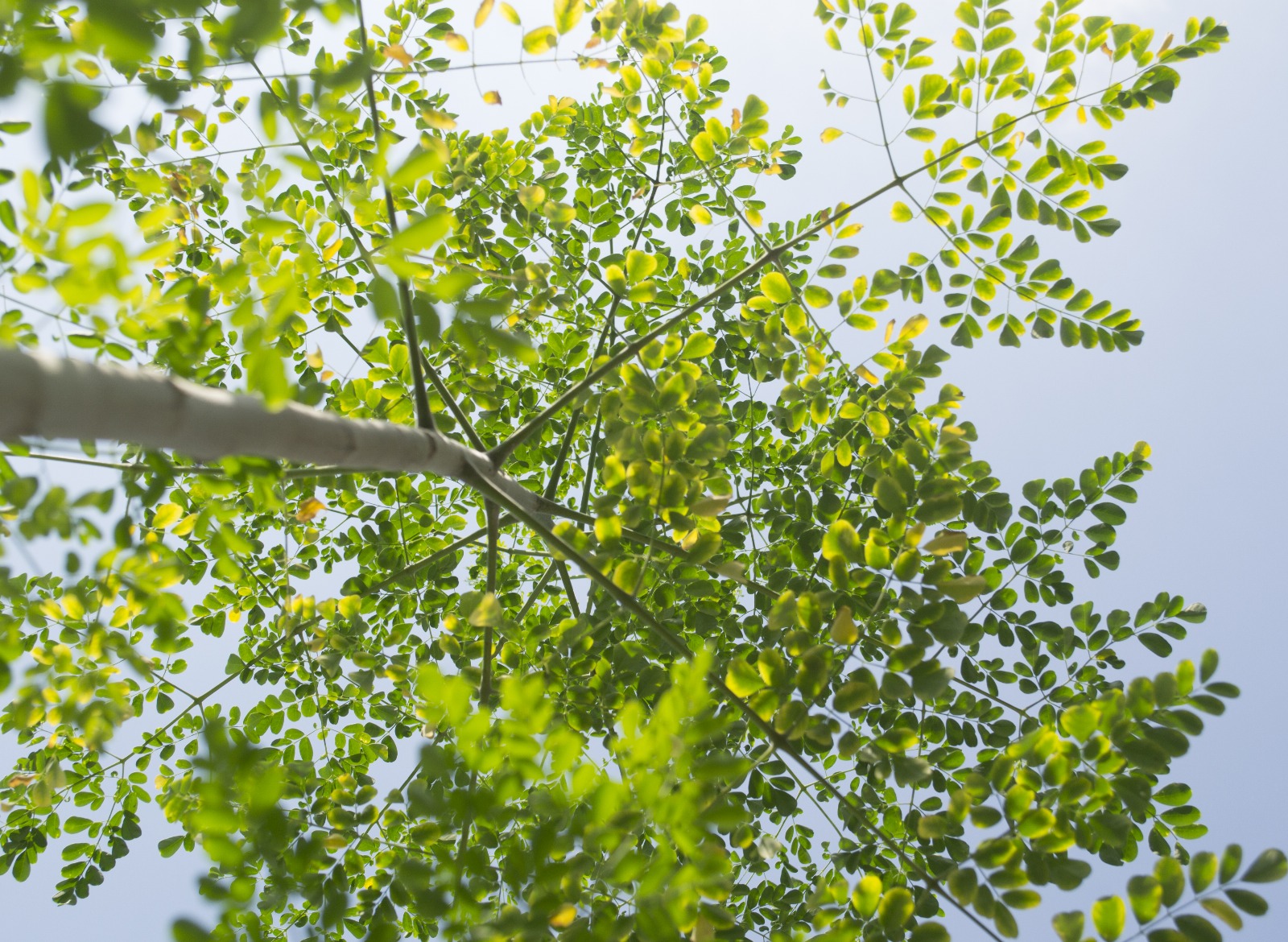
Planting and Care
Step-by-step instructions on how to plant Moringa seeds or seedlings
- Prepare the soil: Moringa prefers well-drained soil with a pH between 6.0 and 7.0. To prepare the soil, mix in organic matter such as compost or aged manure to improve the fertility and structure of the soil.
- Choose the right location: Moringa thrives in warm and sunny conditions. Select a spot in your garden that gets at least 6 hours of direct sunlight per day.
- Planting seeds: Fill seedling trays or pots with seed compost and sprinkle the Moringa seeds on top. Cover the seeds with a thin layer of compost or vermiculite, and water well. Keep the seed trays or pots in a warm place (around 25-30°C) and keep the soil moist. Germination usually takes 7-14 days.
- Planting seedlings: When the seedlings are large enough to handle, transplant them into pots or into the ground. Space the seedlings about 3-4 feet apart. Water the seedlings well after transplanting.
- Care and Maintenance: Moringa is a fast-growing tree and will require regular watering, especially during dry spells. Fertilize the Moringa trees every 2-3 weeks with a balanced fertilizer. Prune the trees regularly to encourage bushier growth and remove any dead or damaged branches.
- Harvesting: Moringa leaves can be harvested as soon as the tree reaches 3-4 feet in height, usually within the first year of growth. The leaves can be harvested by cutting off the branches or by plucking the leaves off the branches. Moringa seeds can be harvested when the pods on the tree have turned brown and dry.
Note: You may need to adjust the above instructions depending on your specific location and weather conditions. Be sure to do some research on the best time to plant Moringa seeds or seedlings in your area.
Information on proper watering and fertilization techniques
Watering: Moringa trees require regular watering, especially during dry spells. It is important to keep the soil consistently moist, but not waterlogged. A general rule of thumb is to water the trees when the top inch of soil is dry.
- Young trees need to be watered more frequently than mature trees.
- In hot and dry weather, you may need to water the trees more often.
- If you are growing Moringa in pots, keep an eye on the moisture level of the soil, as the pots can dry out more quickly than in-ground plants.
Fertilization: Moringa trees are heavy feeders and will benefit from regular fertilization
- Use a balanced fertilizer, such as a 10-10-10 or a 12-12-12 fertilizer, and apply it every 2-3 weeks.
- You can also use a slow-release fertilizer, which will provide a steady supply of nutrients to the trees over a longer period of time.
- If you prefer organic fertilizer, you can use well-aged compost or aged manure.
- Avoid over-fertilizing, as this can lead to leaf burn and other problems.
Keep in mind that Moringa is a drought-resistant plant, but it still needs water and nutrients to grow properly. It is important to find the right balance between watering and fertilizing to ensure healthy growth. If you notice that the leaves are turning yellow or falling off, it could be a sign of over-watering or over-fertilizing.
You can also use foliar feeding where you spray the leaves with a liquid fertilizer, this method is especially useful for young trees and seedlings. It helps them to absorb nutrients faster and more efficiently.
Monitoring the soil pH, if it’s too low or too high, it can affect the absorption of the nutrients. If the pH is not optimal, you can adjust it by adding lime or sulfur to the soil.
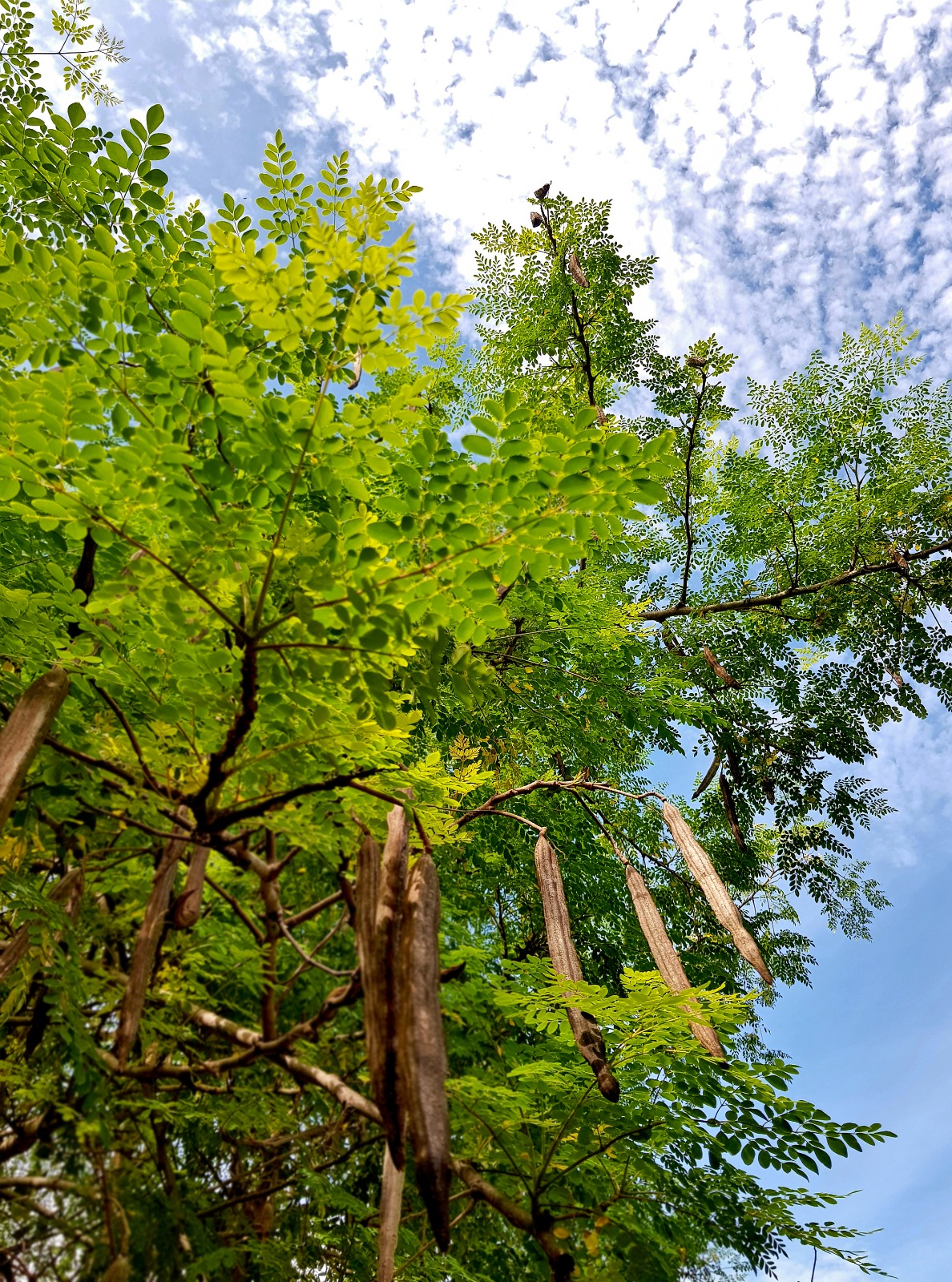
Tips on how to prune and shape the Moringa tree
- Moringa trees should be pruned regularly to encourage bushier growth and to remove any dead or damaged branches.
- Prune the trees when they are young to shape them and encourage bushier growth.
- Prune the trees every 6-12 months to maintain their shape and size.
- Remove dead or damaged branches: Regularly check the tree for dead or damaged branches and remove them. This will help to prevent the spread of disease and pests.
- Remove lower branches: Moringa trees can grow very tall, and lower branches can become shaded and die. Remove the lower branches to allow light to reach the lower part of the tree.
- Pinching: Pinching the tips of the branches can help to encourage bushier growth. Pinching is a process of pinching out the growing tips of the branches. It will help to promote the growth of side shoots, which will make the tree bushier and more productive.
- Training the tree: If you want to train your Moringa tree to grow in a specific shape or form, you can use bamboo or wooden stakes to guide the growth of the tree. Tie the branches to the stakes to shape the tree.
- Keep in mind that Moringa is a fast-growing tree, so it will require regular pruning to maintain its shape and size. Pruning also helps to promote the growth of new leaves, which can be harvested for food or medicine. Be sure to use sharp, clean pruning shears to avoid damaging the tree.
Pest and Disease Management
Common pests and diseases that can affect Moringa growth
- Pests:
- Aphids: These small, soft-bodied insects can damage the leaves and stems of the Moringa tree. They are commonly found on the new growth and can cause leaves to curl and become distorted.
- Whiteflies: These small white insects can damage the leaves and stems of the Moringa tree. They can also excrete a sticky substance called honeydew, which can attract ants and other pests.
- Mealybugs: These small, white, cottony insects can damage the leaves and stems of the Moringa tree. They can also excrete a sticky substance called honeydew, which can attract ants and other pests.
- Diseases:
- Root rot: This is caused by a fungus that attacks the roots of the Moringa tree. Symptoms include yellowing leaves, wilting, and stunted growth.
- Powdery mildew: This is caused by a fungus that forms a white powdery coating on the leaves of the Moringa tree. Symptoms include yellowing leaves, wilting, and stunted growth.
- Leaf spot: This is caused by a fungus that forms small, circular spots on the leaves of the Moringa tree. Symptoms include yellowing leaves, wilting, and stunted growth.
It’s important to keep an eye out for these pests and diseases, as they can quickly damage or kill the Moringa tree. If you notice any signs of infestation or infection, it’s important to take action immediately to control the problem.
Methods for preventing and treating pest and disease infestations
- Preventive measures:
- Proper sanitation: Keep the area around the Moringa tree clean and free of debris. Remove any fallen leaves or branches, as they can harbor pests and diseases.
- Proper irrigation: Water the Moringa tree at the base of the trunk to avoid getting water on the leaves, which can encourage fungal growth.
- Proper pruning: Regularly prune the Moringa tree to remove any dead or damaged branches, which can harbor pests and diseases.
- Pest Control:
- Natural predators: Encourage natural predators such as ladybugs, lacewings, and parasitic wasps to control pests.
- Neem oil: Use neem oil as an insecticide to control pests. Spray the tree with a solution of neem oil and water, being sure to cover all parts of the tree, including the underside of the leaves.
- Insecticidal soap: Use insecticidal soap to control pests. Spray the tree with a solution of insecticidal soap and water, being sure to cover all parts of the tree, including the underside of the leaves.
- Disease Control:
- Proper sanitation: Keep the area around the Moringa tree clean and free of debris. Remove any fallen leaves or branches, as they can harbor diseases.
- Proper irrigation: Water the Moringa tree at the base of the trunk to avoid getting water on the leaves, which can encourage fungal growth.
- Proper pruning: Regularly prune the Moringa tree to remove any dead or damaged branches, which can harbor diseases.
- Fungicide: Use a fungicide to control fungal diseases. Be sure to follow the instructions on the fungicide label for the best results.
Also, keep in mind that it’s essential to identify the specific pest or disease that is affecting your Moringa tree, as different pests and diseases require different treatments. If you’re unsure, consult with a horticulturist or an expert in your area for an accurate diagnosis and treatment.
Harvesting and Processing
Information on when to harvest Moringa leaves and seeds
- Harvesting Moringa leaves: The leaves of the Moringa tree can be harvested as soon as the tree reaches 3-4 feet in height, usually within the first year of growth. The leaves can be harvested by cutting off the branches or by plucking the leaves off the branches. The tree can be repeatedly harvested for leaves for several years. To harvest leaves, cut the branches that have leaves and be sure to use clean, sharp pruning shears or scissors to avoid damaging the tree.
- Harvesting Moringa seeds: The seeds can be harvested when the pods on the tree have turned brown and dry. The pods should be picked before they split open and release the seeds. To harvest the seeds, cut the pods off the tree and dry them in a warm, dry place. Once dry, the seeds can be removed from the pods and stored in an airtight container.
- Keep in mind that the best time to harvest Moringa leaves and seeds depends on the local weather conditions and the specific variety of Moringa you are growing. In general, leaves and seeds can be harvested year-round, but for best results, it is best to harvest leaves when they are young and tender, and harvest the seeds when the pods are fully mature.
- Also, it is important to not over-harvest the leaves and seeds, as this can stress the tree and reduce its productivity. It is recommended to harvest no more than one-third of the leaves or seed pods at a time, leaving the tree enough to continue to grow and produce.
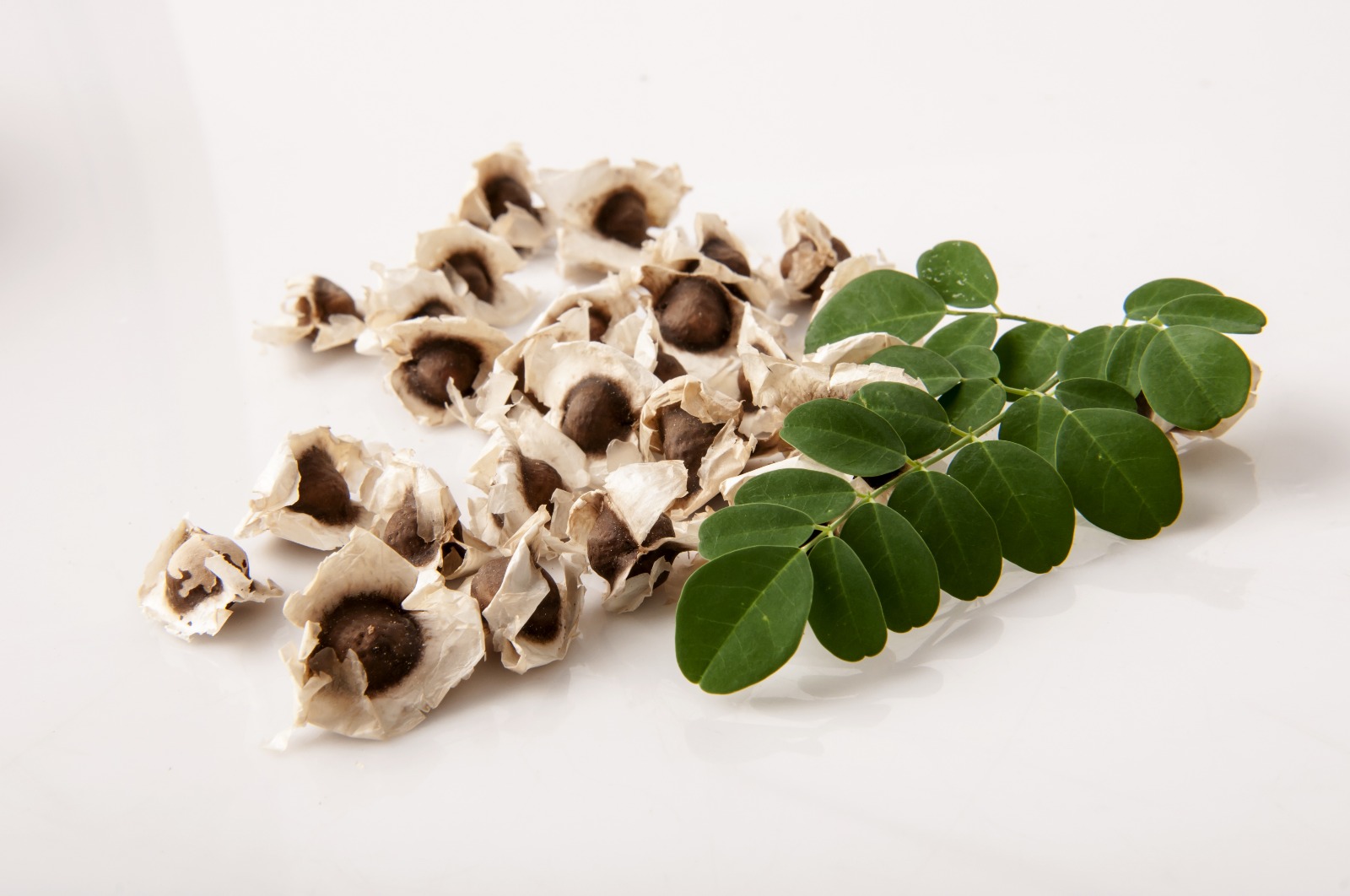
Tips on how to properly store Moringa for consumption
To properly store Moringa for consumption, follow these tips:
- Keep the Moringa leaves fresh by storing them in an airtight container or plastic bag in the refrigerator.
- Dried Moringa leaves can be stored in an airtight container in a cool, dry place for several years.
- Moringa powder can be stored in an airtight container in a cool, dry place for many years.
- Avoid storing Moringa in direct sunlight or in a damp place, as this can cause the leaves to spoil or the powder to clump.
- To prolong the shelf life of Moringa, keep it as dry as possible.
- To use Moringa powder, mix it with water to make a paste, or add it to smoothies, soups, or other dishes.
Tips on how to properly process Moringa for consumption
To properly process Moringa for consumption, follow these tips:
- Clean the Moringa leaves thoroughly by washing them in clean water to remove any dirt or debris.
- To dry Moringa leaves, you can use a dehydrator, or spread them out on a clean surface in a well-ventilated area out of direct sunlight.
- To make Moringa oil, the seeds must be extracted from the pods, cleaned, and then cold pressed to extract the oil.
- Cooked Moringa leaves can be consumed as a vegetable, they can be added to soups, stews, curries, or used in a salad.
- Moringa oil is edible and can be used in salad dressings, cooking, or as a moisturizer for skin and hair.
- The Moringa root can be used to make tea or can be used to make a bitter condiment.
- Moringa seed pods can be eaten as a vegetable, similar to okra.
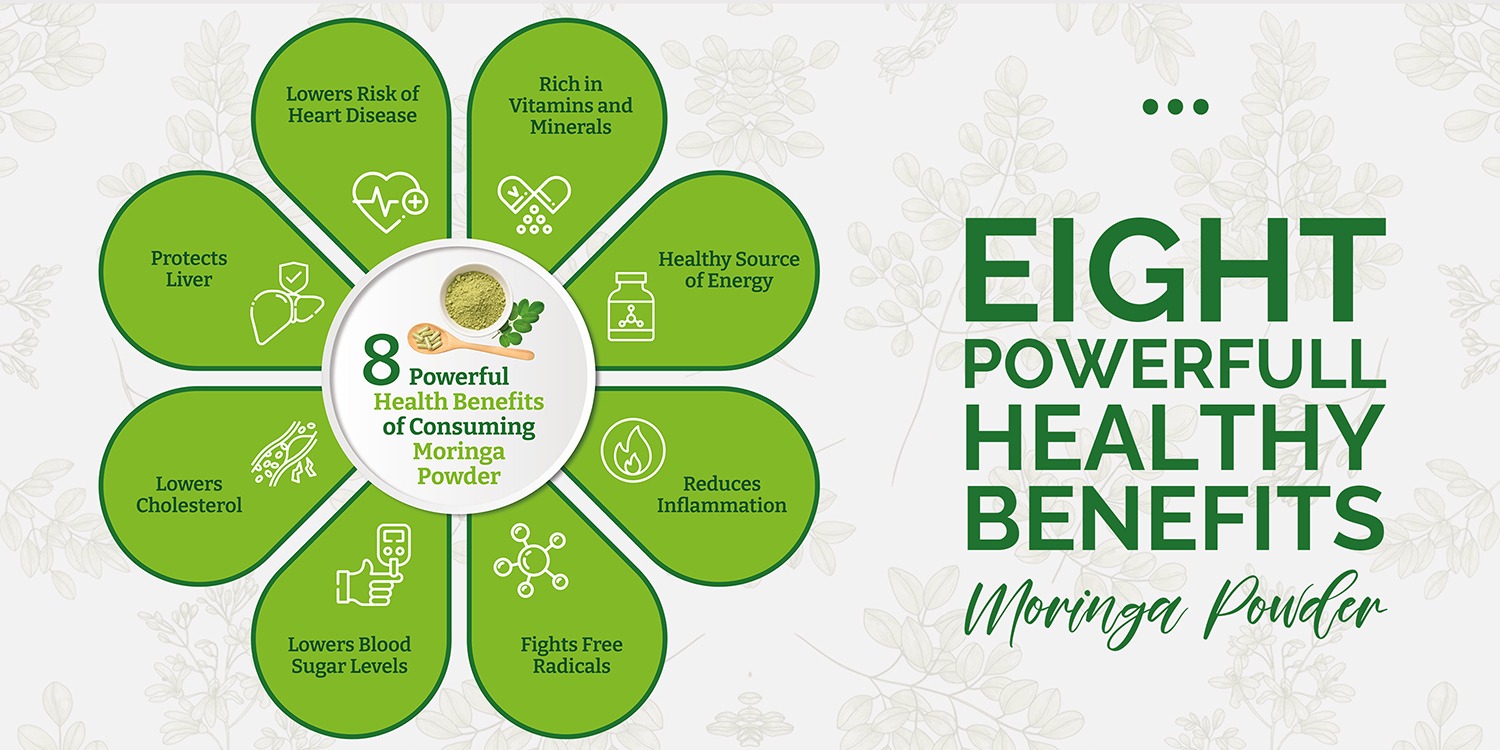
Conclusion
Growing Moringa trees is relatively simple and requires only a basic understanding of gardening. The Moringa tree thrives in warm and humid environments and can grow in different soil types, with well-drained sandy or loamy soils being the most ideal. You can propagate Moringa trees from either seed or cuttings.
Moringa trees can grow quickly and can reach maturity in as little as 6 months. Regular watering during dry periods will help to keep the tree healthy and promote growth. This tree does not require pruning, but removing dead or diseased branches can improve its health. By following these guidelines, anyone can successfully grow a Moringa tree and enjoy its many benefits.
Moringa With Barry stores offer a variety of moringa products. These include: Moringa Powder, Moringa Tea, Moringa Capsules and Moringa Oil.
Harnessing the Amazing Power of Moringa: Lowering Cholesterol Levels
Edibility of Moringa Seeds: Exploring their Culinary Potential
Managing Moringa Trees: Tips for Keeping Them Short
Growing Timeline of a Moringa Tree: How Long Does It Take to Grow?
A Guide to Making Moringa Leaf Tea: Enjoying its Benefits and Flavor


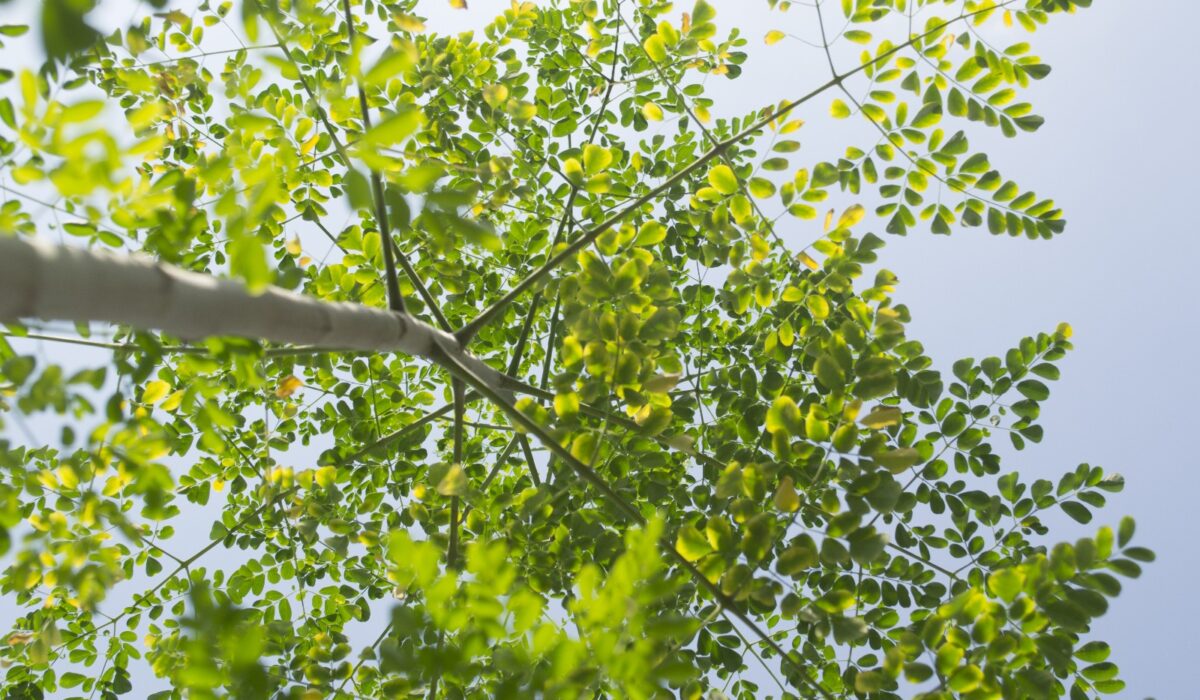
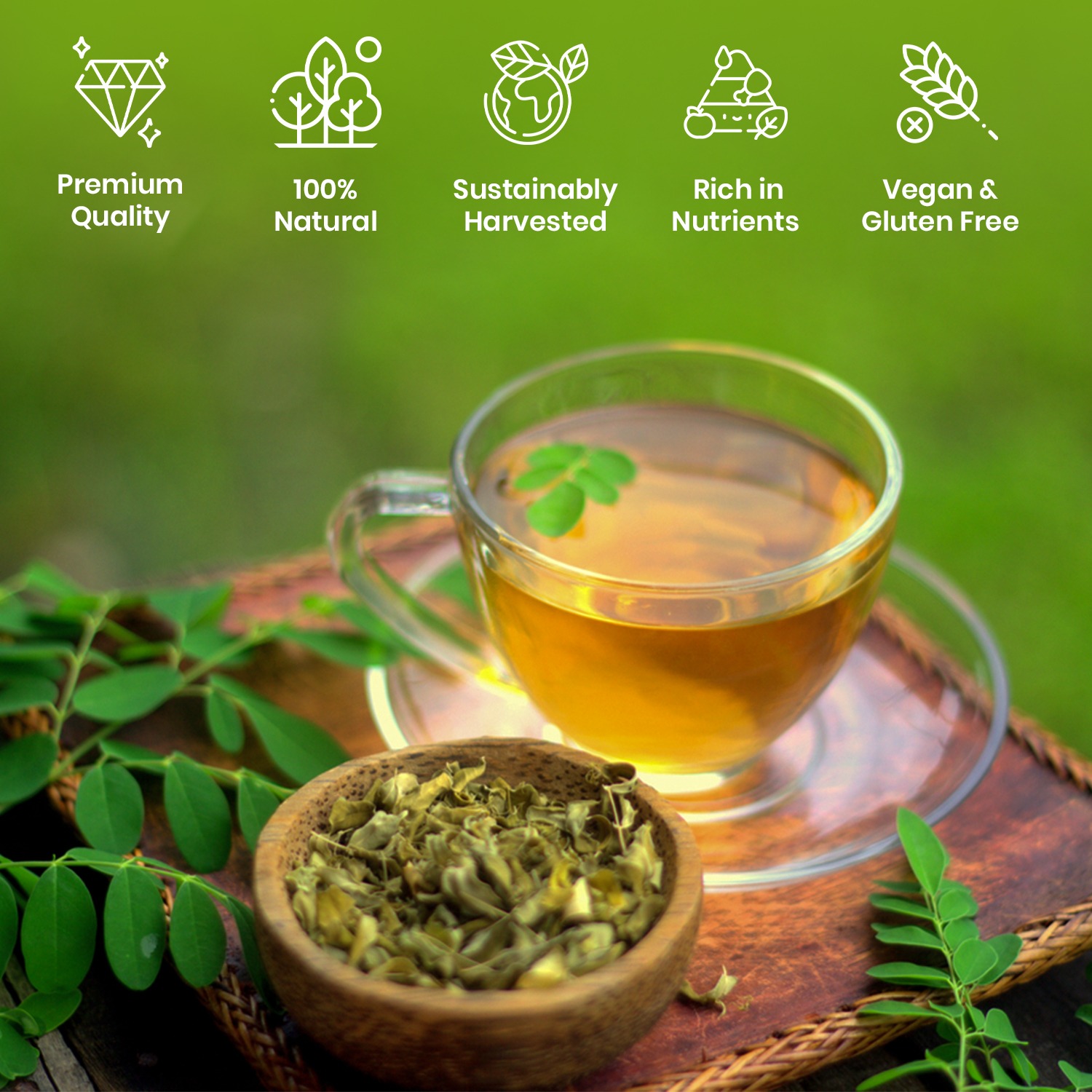
11 Comments
Nice
Thank you wonderful article